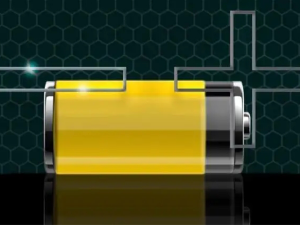Regardless of performance, cost or safety considerations, all-solid-state rechargeable batteries are the best choice to replace fossil energy and eventually realize the road to new energy vehicles.
As the inventor of cathode materials such as LiCoO2, LiMn2O4 and LiFePO4, Goodenough is well known in the field of lithium-ion batteries and is truly the "father of lithium-ion batteries".
In a recent article in NatureElectronics, John B. Goodenough, who is 96 years old, reviews the history of the invention of the rechargeable lithium-ion battery and shows the way forward.
In the 1970s, an oil crisis erupted in the United States. Realizing its over-dependence on oil imports, the government began a major effort to develop solar and wind energy. Due to the intermittent nature of solar and wind energy, rechargeable batteries were eventually needed to store these renewable and clean energy sources.
The key to reversible charging and discharging is the reversibility of the chemical reaction!
At that time, most of the non-rechargeable batteries used lithium negative electrodes and organic electrolytes. In order to achieve rechargeable batteries, everyone started to work on reversible embedding of lithium ions into layered transition metal sulfide cathodes. Stanley Whittingham of ExxonMobil discovered that reversible charging and discharging could be achieved by intercalation chemistry using layered TiS2 as the cathode material, with the discharge product being LiTiS2.
This cell, developed by Whittingham in 1976, achieved good initial efficiency. However, after several repetitions of charging and discharging, lithium dendrites formed inside the cell, which grew from the negative to the positive electrode, creating a short circuit that could ignite the electrolyte. This attempt, again, ended in failure!
Meanwhile, Goodenough, who moved to Oxford, was investigating how much lithium could at most be de-embedded from the layered LiCoO2 and LiNiO2 cathode materials before the structure changed. In the end, they achieved reversible de-embedding of more than half of the lithium from the cathode material.
This research eventually guided Akira Yoshino of AsahiKasei to prepare the first rechargeable lithium-ion battery: LiCoO2 as the positive electrode and graphitic carbon as the negative electrode. This battery was successfully used in Sony's earliest cell phones.
In order to reduce cost and improve safety. The all-solid rechargeable battery with solid as electrolyte seems to be an important direction for future development.
As early as the 1960s, European chemists worked on the reversible embedding of lithium ions into layered transition metal sulfide materials. At that time, the standard electrolytes for rechargeable batteries were mainly strong acidic and alkaline aqueous electrolytes such as H2SO4 or KOH. Because, in these aqueous electrolytes, H+ has good diffusivity.
At that time, the most stable rechargeable batteries were made with layered NiOOH as the cathode material and a strong alkaline aqueous electrolyte as the electrolyte. h+ could be reversibly embedded in the layered NiOOH cathode to form Ni(OH)2. the problem was that the aqueous electrolyte limited the voltage of the battery, resulting in a low energy density.
In 1967, Joseph Kummer and NeillWeber of Ford Motor Company discovered that Na+ has good diffusion properties in ceramic electrolytes above 300°C. They then invented a Na-S rechargeable battery: molten sodium as the negative electrode and molten sulfur containing carbon bands as the positive electrode. As a result, they invented a Na-S rechargeable battery: molten sodium as the negative electrode, molten sulfur containing a carbon band as the positive electrode, and a solid ceramic as the electrolyte. However, the operating temperature of 300°C doomed this battery to be impossible to commercialize.
In 1986, Goodenough realized an all-solid-state rechargeable lithium battery without dendrite generation using NASICON. Currently, all-solid-state rechargeable lithium and sodium batteries based on solid-state electrolytes such as NASICON have been commercialized.
In 2015, MariaHelena Braga of the University of Porto also demonstrated an insulating porous oxide solid electrolyte with lithium and sodium ion conductivity comparable to the organic electrolytes currently used in lithium-ion batteries.
In short, regardless of performance, cost or safety considerations, all-solid-state rechargeable batteries are the best choice to replace fossil energy and eventually realize the road to new energy vehicles!
Post time: Aug-25-2022
